Wednesday morning was brisk, with a strong northwest wind. The seriously cold Canadian air quick-froze everything not moving. I dropped off the Horsewoman for a Yeti checkup (he’s in excellent shape according to the vet!).
Yeti went on his own little walk in the frigid air, happy to get out of the barn, even on such a day, while I headed for the Huron River again, anxious to scout for migratory ducks on other parts of the river.
Even more of the river had frozen.
A pair of mergansers found this open spot.
I scared up a flock of mallards. Off in the middle of the river I could see buffleheads and scaup. But too far off to capture with my phone camera.
I drove to the other side of the river, where three bald eagles were soaring over the open water, surfing in the strong breeze.

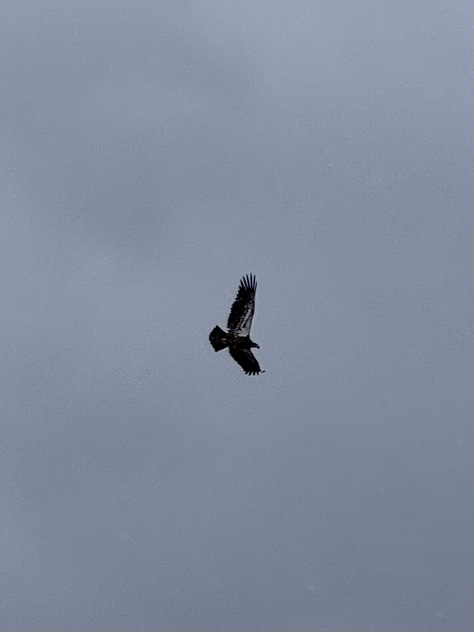
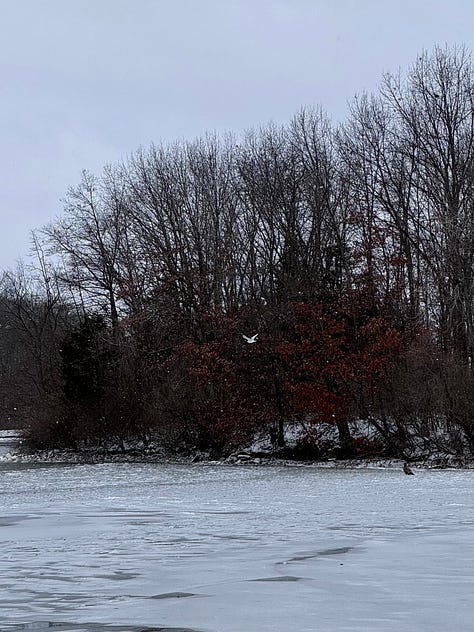
In the right picture above, an eagle has landed on the ice, sheltering from the strong wind in the lee of an island, while a white gull flies above.
The bald eagles will linger as long as they can find open water. The osprey may have already migrated. I have seen hundreds of bald eagles on the upper Mississippi in Minnesota in February, when they start building their nests. But as you can see below the osprey head south.
Credit:All About Birds, Cornell Lab.
Brilliant Reader Sue from Texas asked a few days ago what the Great Blue Herons are eating now that the smaller lakes and ponds have frozen. It was a good question. Here’s the range map:
Great Blue Herons don’t all migrate out of Michigan, as you can see in the map above.
Credit All About Birds, Cornell Lab.
So what do they eat in the winter? Fish and amphibians are their typical prey, but they will also eat mice, snakes, and other birds. They stand motionless, then spear their victims. I found a heron carcass on Christmas Day, 2018 next to our pond in Northwestern Ohio. It was shocking how light the large bird was. Their bones are hollow.

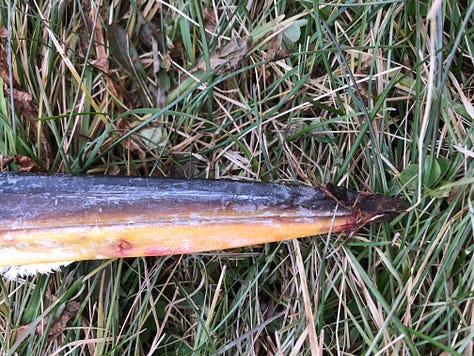
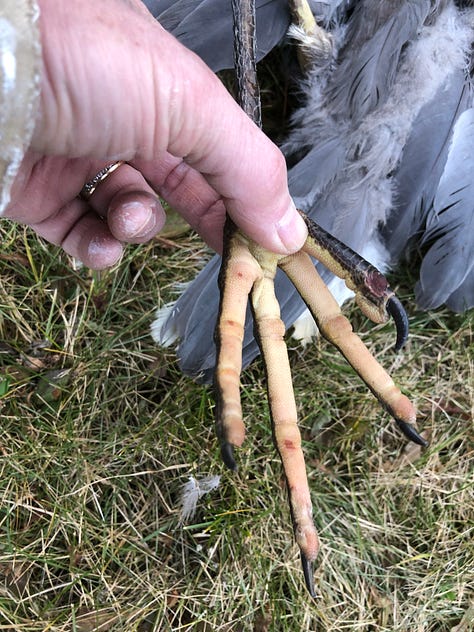
I examined it closely, amazed by the size and adaptations that permit this large bird to fly, fish and hunt so successfully. The long sharp blood-stained beak (center photo) is quite a weapon.
Not all the ponds and lakes are frozen yet, and there is usually some open water somewhere. Yesterday back at home I took a late afternoon walk. As I was tracking some Sandhills Cranes I came to a spot on Timber Trace Creek that was still open water.
The water was moving! Something was swimming, although the temp was 22 F (-6C). Watch in the short video how the water seems to be boiling.
Small fish have been trapped here in this spot along the creek and are swimming in this pool to keep it from freezing. What a perfect smorgasbord for Herons and Cranes!
The Sandhills were no doubt feeding here, which explains all the fresh tracks nearby.
This was the same place I posted about on Dec. 2nd: Who Made These Tracks?.
I had one additional clue yesterday, besides the tracks:
A feather! No doubt a Sandhill was grooming herself here recently, probably after a tasty meal. I still haven’t seen them in person here recently, but there is no doubt they’re still hanging around. I’ll keep you posted! I’m guessing by the time we head for Egypt at the end of the month they’ll be gone. Edited 9 Dec. 2024. Correction! Feather is from a mourning dove! Credit iNaturalist.
There are so many little birds flying around now, huddling along the creek near the feeders the friendly humans have put out. I’ve been wondering if the chickadees, juncos, titmice and downy’s can be accustomed to hand feeding like those along the Huron River at Kensington Metropark.
I don’t see any reason not to try, do you?
We’re heading to Boston for a few days to catch some Brilliant Grandchild Concerts. I’m looking forward to that, as well as some early holiday celebrations and perhaps to a walk in the Blue Hills Reservation near the Brilliant Son’s home.
By the way, Sue Cauhape, from Western Nevada (check out her site: Two Poems by Sue Cauhape) has a bird she can’t identify. I think it might be a Varied Thrush:
What do you think Sue? Is this your bird? Interesting range, just in the mountains near you in Western Nevada and California. At any rate it’s a beautiful bird so thought I’d share.
Thanks for traveling along~! So glad you’re here!
Editing note: An earlier version of this story misidentified the juvenile bald eagle as an osprey, and the feather as that of a Sandhill Crane. Mea Culpa~!





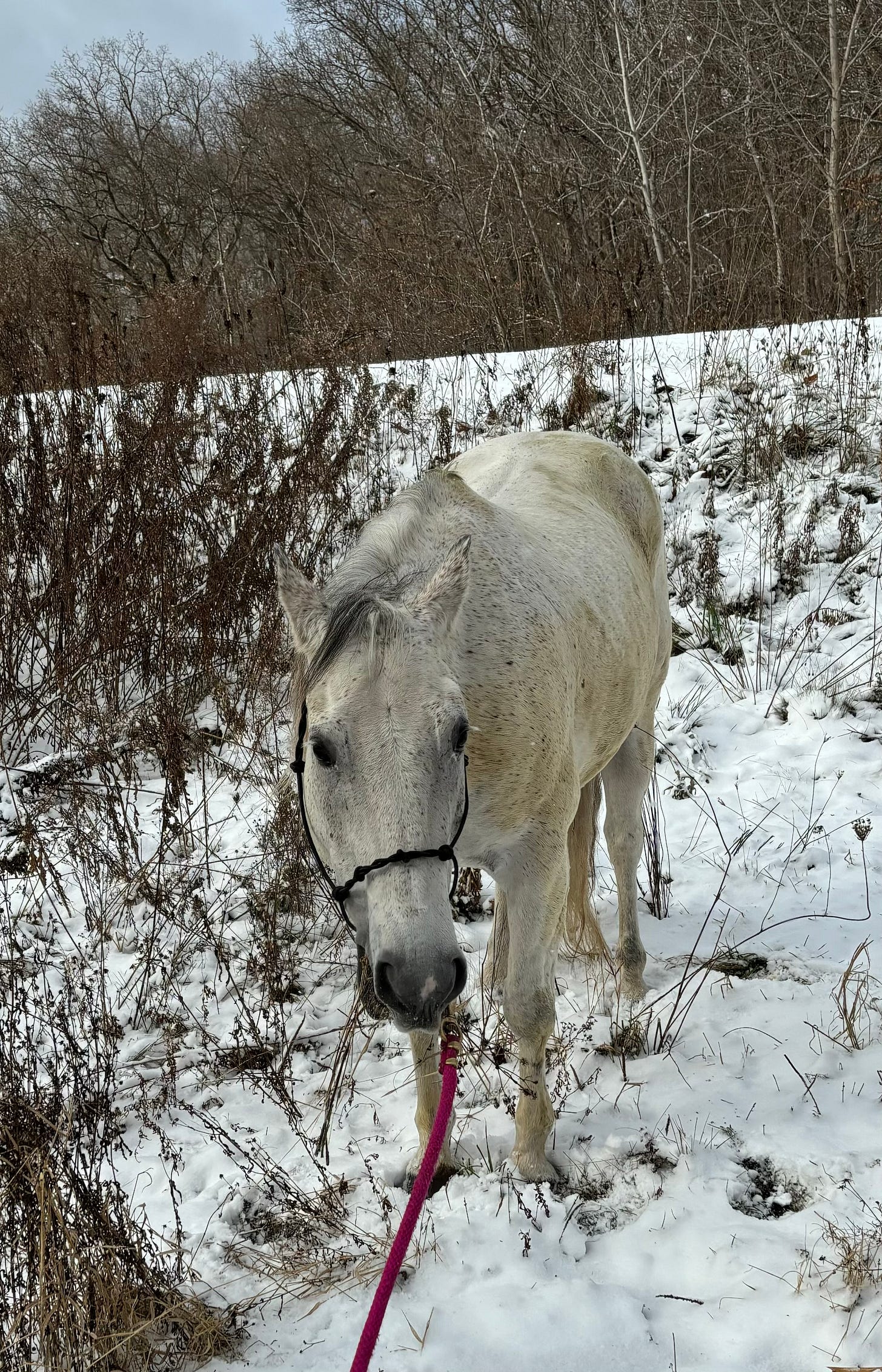


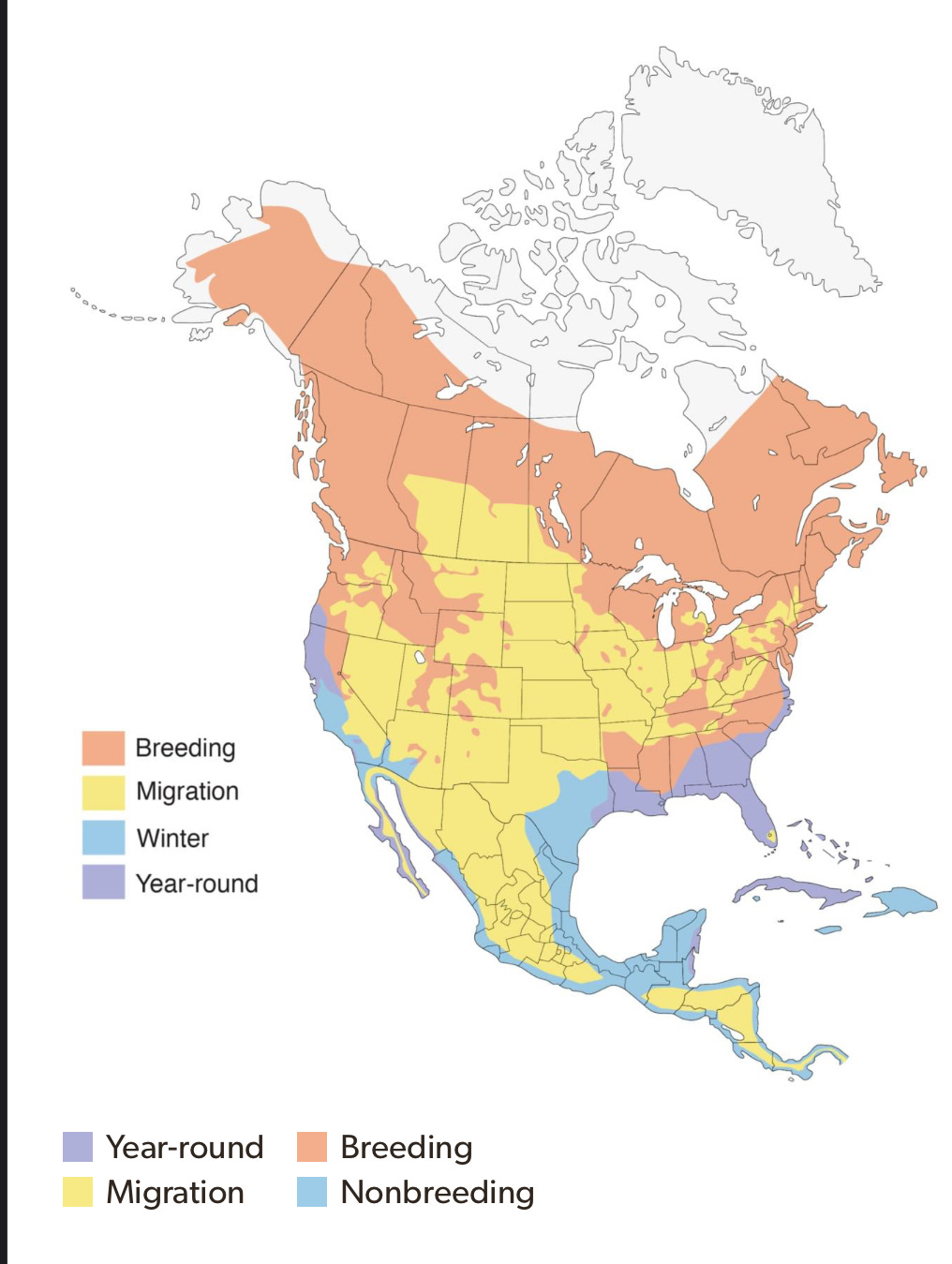




O I am so glad I bought Tan's book. The two brilliant yellow boys I told you about are American goldfinches. The Ornithology Lab's birdsong recordings have one call has a long upswing. To the side of that, I read that these guys have a two-part "hey-bee" call they use when they feel threatened. I think that was the situation when I saw them. I sat too close to where they alit. https://www.allaboutbirds.org/guide/American_Goldfinch/sounds
The first "call" on the list of recordings is very close to what I heard but it didn't have that "siskin sigh." Tan wrote in her blurb about them that they hung out with Pine Siskins and other finches. These birds have a lot of calls and they pick up new calls all during their lives. This makes perfect sense to me, then.
I just received delivery of Amy Tan's "The Backyard Bird Chronicles" from Amazon. Just flipping through the pages before sitting down for a good read, I saw a drawing showing three "feeder birds." One of them was the LBB with the yellow striped over its eye. I checked it out on the Cornell Ornithology Lab's website and here it is: Bewick's Wren. How's that for Serenidipity!?
https://www.allaboutbirds.org/guide/Bewicks_Wren/photo-gallery/464569